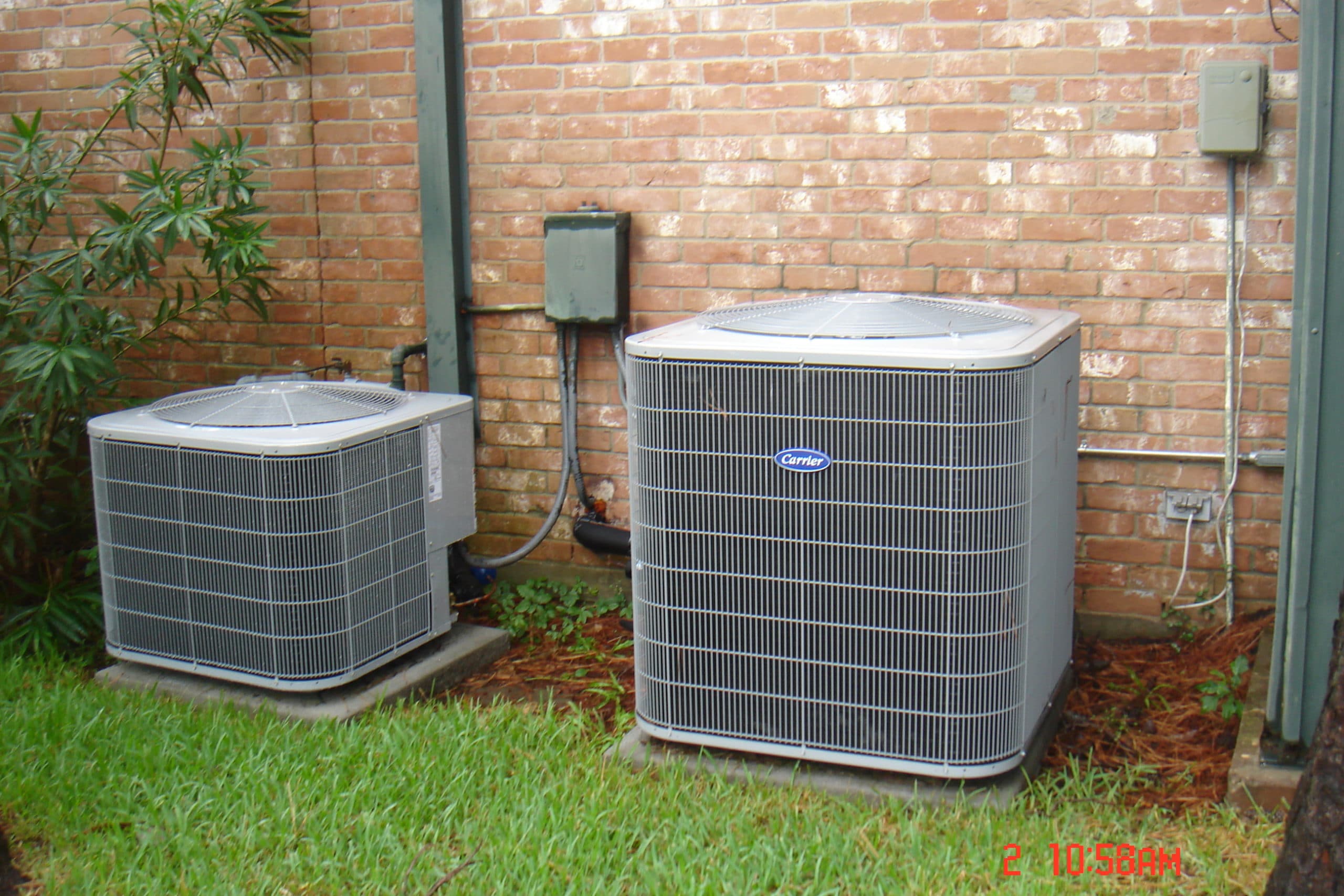How much does a central air conditioner cost? Many factors affect the price of a central air conditioner. Buying a new unit is probably the most straightforward way to determine the total cost of your system. If you are upgrading from an older unit, you may be looking to install a new unit in the same location. These circumstances can all affect the cost of your new central AC unit. Additional plumbing, electrical work, and HVAC systems can also drive up the price. You should also know whether you need to remove asbestos or mould. These factors can make or break your total cost.
Split-system central air conditioners
While you can find central air conditioners at affordable prices on the market, choosing the suitable model is vital to your comfort level. We measure air conditioning systems in British Thermal Units per Hour, or BTUh. Higher BTUh models typically cost more due to the materials needed. Bigger isn’t always better, so keep this in mind when choosing your unit. You should also consider the size of the room where you plan to install it.
Split-system central air conditioners are typically more expensive than mini-split air conditioners. However, they are more cost-effective and operate well even in scorching climates. The mini-split air conditioner is a popular choice because it is around $3,600 to $8,800. These units operate quietly and do not require separate outdoor and indoor components.
Most central air conditioners use a two-stage process to distribute cooling across a large area. A packaged system contains all cooling components in a single outdoor cabinet. In contrast, split-system systems separate these components into two indoor units. These units have an outdoor cabinet, which sits on a concrete slab outside the home. The indoor unit contains either a heat pump or a furnace.
The cost of split-system central air conditioners varies by model. New mini-splits are more expensive than older models because they require drilling through walls and floors. They also require additional electrical wiring and copper refrigerant tubing. Older mini-splits require less prep work, and technicians can install them faster. Remember to ask about installation prices before you make the purchase. You should also factor in the cost of service. Depending on the brand’s quality, air conditioners can cost anywhere from $1,700 to $3,400.
Energy-efficiency rating
The Energy-efficiency rating of a central air conditioner is an important feature to consider when choosing one for your home. Most central air conditioners are variable-capacity systems, and most of the top-rated units have a two-stage design.
There are two ways to rate the energy efficiency of these systems: seasonally and during peak cooling season. For example, in Hamilton, homeowners may only use their air conditioner once or twice during the spring, then a lot in the summer. The second rating is called the Energy Efficiency Rating, or EER. The former rating is better suited for climates where temperatures do not fluctuate much from one season to the next.
Fortunately, today’s manufacturers are offering models with higher SEER ratings. EER ratings are similar to miles per gallon, but they measure energy efficiency at different temperatures. The higher the SEER, the better, and if you’re looking for maximum savings, the higher the SEER rating. And you don’t have to settle for a higher SEER if you’re not interested in the price. The average price of an air conditioner is around $600 a year, which is less than the average mortgage payment in Canada.
The energy-efficiency rating of a central air conditioner is vital for many reasons. A higher SEER means that the system will require less electricity to run. In the United States, a new central air conditioner needs to meet a minimum energy efficiency standard. While many new models are above that level, it’s still important to know the SEER of your new central air conditioner to ensure it meets the efficiency requirements. You can find the SEER of a central air conditioner by reading the label.
Price
The price of a central air conditioner can vary considerably depending on the brand, tonnage, and model. Carrier central air conditioners can cost anywhere from $3,400 to $7,100, while Bryant models are usually less expensive but lack the reliability of Daikin units. Bryant is an affordable brand and produces fairly efficient models. Founded in 1895, the Bryant company upgrades its product line every five years. The upgrades give consumers the option to buy the most cost-efficient unit available at a price they can afford.
The total cost of a central air conditioner installation varies widely, but the national average is between $5,000 and $12,000, depending on the size of the system. For example, a three-ton split system with a 16 SEER rating will cost homeowners around $7,000, while a 13 SEER-rated system will cost about $3,000. The cost of a 21-SEER-rated central air conditioner can range anywhere from $15,000 to $22,000 or more.
A high-quality central air conditioning unit can cost anywhere from $1,500 to $10,000. If you have a furnace, a packaged air conditioner is an alternative to a split system. Instead of having two or more separate units, packaged air conditioners use ducts to circulate air throughout the home. However, this type of system requires more maintenance and repair work than split systems, and the price of a packaged air conditioner is higher than for a split system.
The size and price of a central air conditioner system depend on the type of house and the number of rooms it will cool. A typical residential air conditioner will have between 1.5 and five tons of capacity, and it is crucial to consider the load that the system will serve. If not installed properly, it could be a complete waste of energy. When choosing a central air unit, please consult with a contractor first.
Installation costs
If you haven’t yet installed a central air conditioner in your home, you may be wondering what to expect. The installation costs of central air units depend on various factors, including the size of your home and whether or not you already have ductwork. A central air conditioner runs through a series of ducts and vents into each room of the house. Split and packaged systems both use the same system, but split air conditioning systems are more expensive and may not be suitable for older homes or apartment buildings.
Before you begin the installation process, it is essential to conduct an energy audit on your home. The results can provide valuable insight into your home’s energy use and your potential future energy costs. If you already have ductwork installed, installing a new system may cost you about $1,800. Ductwork installation can be expensive in older homes. Some companies also charge an additional fee for removing and disposing of old ductwork.
Central AC prices vary based on many factors, but the average cost ranges from $5,000 to $12,000 for a three-ton unit. A mid-range unit may cost less than half, while a high-end model may cost as much as $15,000 or more. As long as the contractor is licensed and insured, central air conditioning installation costs are a relatively affordable project. But there are several things to keep in mind before hiring a contractor.
The average cost of installing a central air conditioner ranges from $2,700 to $6,582. The higher SEER (seasonal energy efficiency ratio) rating systems are more expensive, but they will last longer and save you money. The costs vary depending on the type of unit you choose, the size of your home, and the state of your home’s air ducts. A central air system will be more effective if your home has ductwork.
Manufacturer’s warranty
If you’ve purchased a central air conditioning system, you should look for a manufacturer’s warranty. These warranties cover both the repair and replacement of components and labour, and most of them include an annual maintenance fee. If the warranty covers only repairs, you may not have to worry about the cost of regular maintenance. However, if the system starts failing in its first few years, you should look at the maintenance.
Most HVAC warranties will not cover labour costs, so read the fine print carefully. Some warranty terms exclude labour, so read the fine print before you sign up for a warranty. Then, if you have an issue, be sure to register the system with the manufacturer. If you have questions or concerns, contact the manufacturer directly or read the manufacturer’s warranty guide. You’ll be glad you did.
Most manufacturers’ warranties will not cover labour costs, but they may provide coverage for parts that break or are otherwise unreliable. However, most warranties cover only certain aspects of the system, not the entire system. You may also need to purchase an extended labour warranty through your installer. Make sure to read all the fine print, as details about the extended labour warranty may become necessary in the future. In addition to the limited parts warranty, you should also look for an extended labour warranty.
What is a manufacturer’s warranty? A manufacturer’s warranty covers parts that fail or malfunction the HVAC system. However, it does not cover labour costs, typically covered by a dealer warranty. It’s also important to note that a manufacturer’s warranty does not cover installation costs since improper installation can result in poor performance for a few years. Therefore, a reputable installation company will offer a warranty for at least 12 months.









